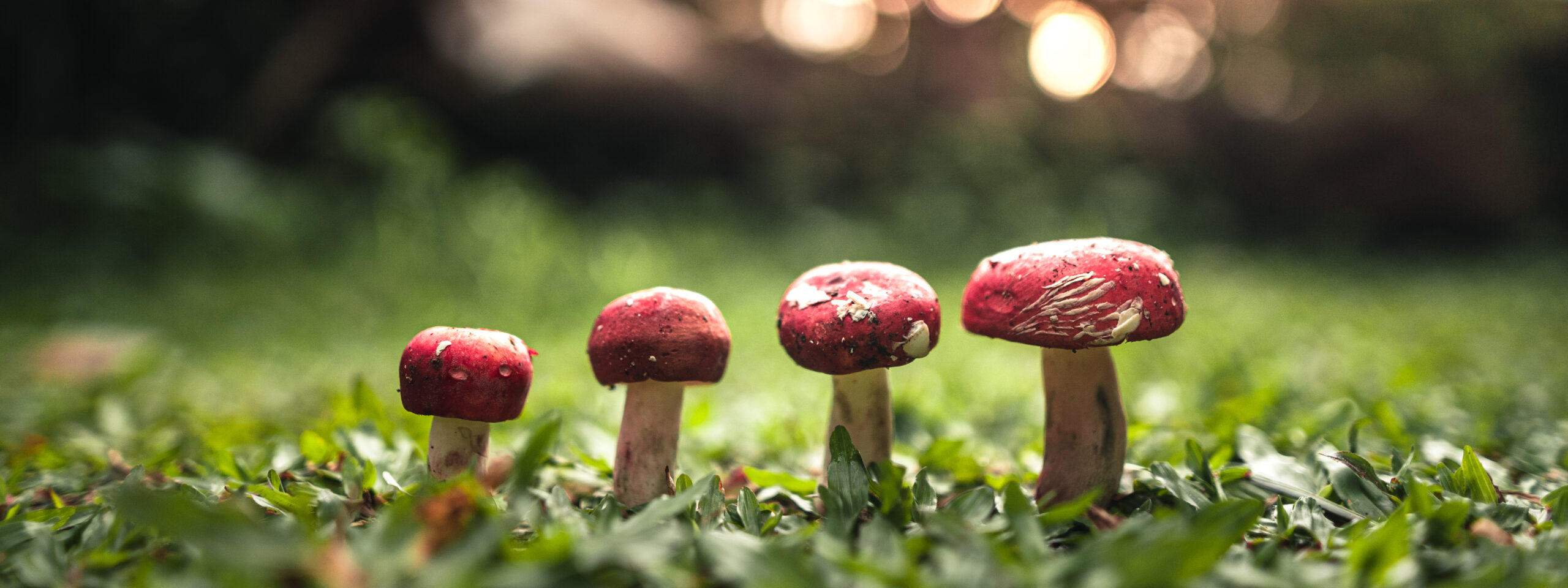
The Secret Life of Mushrooms
Mushrooms pop up mysteriously in forests, yards, and even sidewalks — strange little umbrellas that vanish as quickly as they arrive. But behind these fleeting fruiting bodies lies a vast, hidden network that scientists are only beginning to understand. Mushrooms aren’t just fungi — they’re vital players in the ecosystem with behaviors that can feel eerily intelligent.
From underground communication to glowing in the dark, the lives of mushrooms are anything but simple. Let’s peel back the forest floor and explore the secret world of fungi.
The Hidden Superpowers of Mushrooms
Here are some of the most surprising and fascinating things mushrooms do — out of sight and often out of mind:
1. They Communicate Through Underground Networks
Many mushrooms are part of a larger structure called mycelium — a web of thread-like filaments that connect with plant roots and other fungi.
This so-called “Wood Wide Web” functions like nature’s internet:
- Transmits signals: Trees can send stress signals (like drought or insect attack) through the mycelium.
- Shares nutrients: Older trees may funnel nutrients to younger or sick ones.
- Supports biodiversity: These fungal networks sustain forest health and plant diversity.
- Responds to damage: Some fungi alter behavior when their network is disturbed.
2. Some Mushrooms Glow in the Dark
More than 80 species of mushrooms are bioluminescent, meaning they produce their own light through a chemical reaction.
This glowing trait serves more than just spooky ambiance:
- May attract insects that help spread mushroom spores.
- Can deter predators by signaling toxicity.
- Light intensity often increases at night for better visibility.
- Glowing species are mainly found in tropical forests — and are best spotted after rain.
3. They Can Clean Up Pollution
Mushrooms don’t just grow in pristine forests — some can actually detoxify contaminated environments, a process known as mycoremediation.
These fungi are ecological clean-up crews with serious potential:
- Break down oil spills and industrial waste.
- Absorb heavy metals and pesticides from soil.
- Some species can digest plastics and even radioactive material.
- Used in environmental restoration and research projects worldwide.
4. Mushrooms “Breathe” and React to Stimuli
Though they don’t have brains or lungs, mushrooms respire and show a surprising ability to respond to changes in their environment.
Here’s what this means biologically:
- They consume oxygen and release carbon dioxide, just like animals.
- Can grow toward food sources and away from harmful chemicals.
- Some fungi exhibit electrical pulses similar to neural activity in animals.
- Changes in light, touch, and air flow can affect their growth patterns.
5. Mushrooms Are More Closely Related to Animals Than Plants
Despite growing in soil and lacking mobility, fungi are part of a separate kingdom — and genetically, they’re actually closer to animals than plants.
This biological connection might surprise you for several reasons:
- Both fungi and animals consume organic material for energy.
- Their cells contain chitin (like insect shells), not cellulose like plants.
- Fungi don’t photosynthesize — they digest food externally before absorbing it.
- Evolutionary trees show fungi branched off closer to animals on the timeline.
The Backstory of Mushroom Discovery
For centuries, mushrooms were more feared than studied. Many cultures associated them with poison, magic, or spirits. It wasn’t until the 20th century that scientists began to recognize the enormous ecological role of fungi.
Groundbreaking research in recent decades has revealed the full scale of mycelium networks, the depth of symbiosis with plants, and their biochemical diversity — leading to medical, environmental, and nutritional breakthroughs.
Why It’s So Intriguing
Mushrooms challenge what we think we know about life. They don’t fit neatly into categories — neither plant nor animal, mobile nor still. They’re everywhere and nowhere, visible for a day and gone the next. And yet they’re quietly shaping the world beneath our feet.
Plus, they offer everything from glow-in-the-dark wonder to cutting-edge biotech potential. The more we study mushrooms, the more they surprise us.
What Most People Don’t Know
Here are a few fun facts to take your mushroom curiosity even deeper:
- The largest living organism on Earth is a mycelium network in Oregon, spanning over 2,000 acres.
- Some fungi produce zombie-like effects — infecting and mind-controlling insects to spread spores.
- Fungal spores can survive in space, according to tests on the International Space Station.
- There are “magic mushrooms” being studied for potential treatments of depression and PTSD.
Bonus Fact
One species of mushroom, Schizophyllum commune, has over 23,000 mating types — making it one of the most genetically diverse organisms when it comes to reproduction!
Takeaway
Mushrooms are more than just toppings on pizza or decorations in fairy tales. They’re powerful, ancient, and still full of secrets. From cleaning up pollution to helping trees “talk,” they may be one of nature’s most underappreciated wonders.